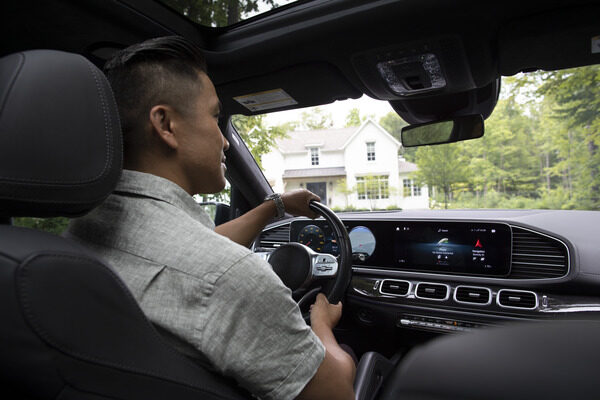
It could be the nearly irresistible urge to “take command” with unsolicited driving directives every time you’re a passenger in a vehicle. Or that sudden “shriek” you let out whenever you feel your comfort zone violated. Either way, you’re exhibiting signs of backseat driver syndrome. While some may shrug off this behavior as simply part of who they are, you should be aware that there are potentially serious consequences — especially if it’s disruptive to the person behind the wheel.
Need proof? Then consider that 14% of drivers say they’ve been involved with an accident or near miss because they were distracted by a backseat driver, according to industry research. Partners/spouses are the most likely culprits, triggering emotional responses which simply aren’t safe. More than half of the drivers polled say they’ve gotten angry behind the wheel as a result of backseat drivers, while 4 out of 10 drivers said backseat drivers make them anxious.
“The driver may already be frustrated with traffic,” says car-care expert Bret Bodas, director of the Automotive Professional Group with RepairPal.com. “You need to be careful not to add to that frustration. Unsolicited advice and other backseat driving can turn ugly quickly, resulting in driver distractions and even accidents. Knowing how and when to provide feedback is often more important than the feedback itself.”
Here’s more on how you can manage these impulses as a passenger, to keep all heads cool in the car and avoid an accident.
Recognize the trouble signs
You have to watch out for physical, verbal or internalized patterns that threaten to take over your passenger experience. “This would include grabbing onto armrests with a frantic sense of holding on to dear life and constantly checking your seatbelt,” Bodas says. “You may also repeatedly be making inquiries of drivers such as, ‘Does this car have airbags?’ or reacting to their driving with a series of ‘Whoa!’ and “Watch out!’ responses.” Practically everyone does this from time to time. But problems tend to arise when you do it all the time and you are potentially impacting the performance of the driver.
Anxiety diagnosis
You may have reason to stress out, especially if the driver has a shoddy record with accidents and/or violations. Or maybe they routinely exercise poor judgment. Assess whether this is the situation at hand, or if the problem is really more about you. In many cases, backseat drivers become that way because they get anxious about not being in control of a vehicle, or a certain passenger experience will trigger a traumatic memory.
“You need to think about the original incident and work through what happened,” says licensed psychotherapist Tina B. Tessina, PhD and author of “The Commuter Marriage.” “You have to understand why it still makes you feel helpless and why it upsets you. Once you understand these things better, you can work on minimizing your fears to convince yourself to be able to ride along with a clearly competent driver without trying to control the situation.”
The right moment
If your discomfort is due to legitimately bad habits on the part of the driver, then you should discuss this. But table the conversation for after the trip. “Don’t add to the problem while you’re in the car,” Bodas says. “Imagine yourself in the driver’s seat, as you’ve probably been there before. You didn’t want to hear your passengers complain about your driving. They likely don’t want to hear it either. Wait until the time is right, and voice your concerns in a respectful manner.”
Distracted driving can lead to accidents. Sign up for Nationwide’s collision coverage, which helps to repair your vehicle if you are at fault in a covered accident.



